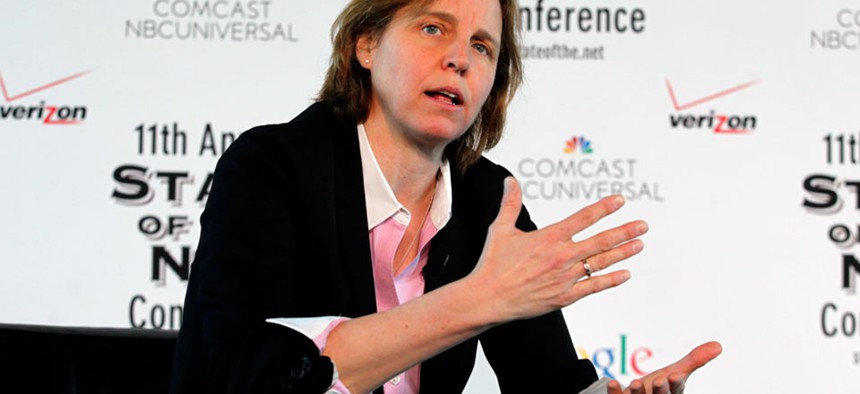Why Women Need a Bigger Role in Federal IT Leadership

United States CTO Megan Smith Flickr user Internet Education Foundation
The underrepresentation of women in federal technology leadership positions could be hurting the industry, says CIO Monica Eaton-Cardone.
How good is a jury composed of only one type of person? No matter how nice and intelligent the people are, they probably won’t come to the best decision, says Monica Eaton-Cardone, the chief information officer of Global Risk Technologies.
The same is true when it comes to IT decision-making, says Eaton-Cardone, who’s part of the exclusive club -- just 11 percent -- of the country's female CIOs.
“The thing is, they are coming to assess the situation and make a decision from very similar schools of thoughts,” Eaton-Cardone said in an interview with Nextgov.
Across the broader IT industry, the share of women in IT fields has been in decline since 1989.
And the same general trend holds true for government. In 1992, almost 40 percent of full-time employees working in IT in executive branch agencies were women, according to an August 2014 OPM report on pay equality in the federal government. That fell to less than one-third by the end of 2012 -- and even less for women in upper-level and management positions, according to the OPM statistics.
“We're talking about the most important components of this country being managed and, yes, I'm sure it's getting done efficiently and it's getting done effectively, but could it be better? Probably,” Eaton-Cardone said.
Women can bring a different perspective to the job, she said, and the lack of women in IT decision-making roles means agencies and companies aren’t tapping the full talent pool at their disposal.
One of the ways to reverse the trend lines is through mentorships to encourage women to move beyond their traditional mid-level position comfort zone, according to Eaton-Cardone.
Currently, there are few mentors, whether female or male, available to women in IT, she said.
It is also important for men in IT to show women respect and pay them fairly, according to Eaton-Cardone.
The federal government got at least one prominent role model when the Obama administration last August named Megan Smith the first female federal chief technology officer.
“Seeing that there’s a government position that’s now upheld with a senior role and a woman is doing it, that really spearheads improvement and it will inspire a lot of young women to consider taking a different route,” Eaton-Cardone said.





